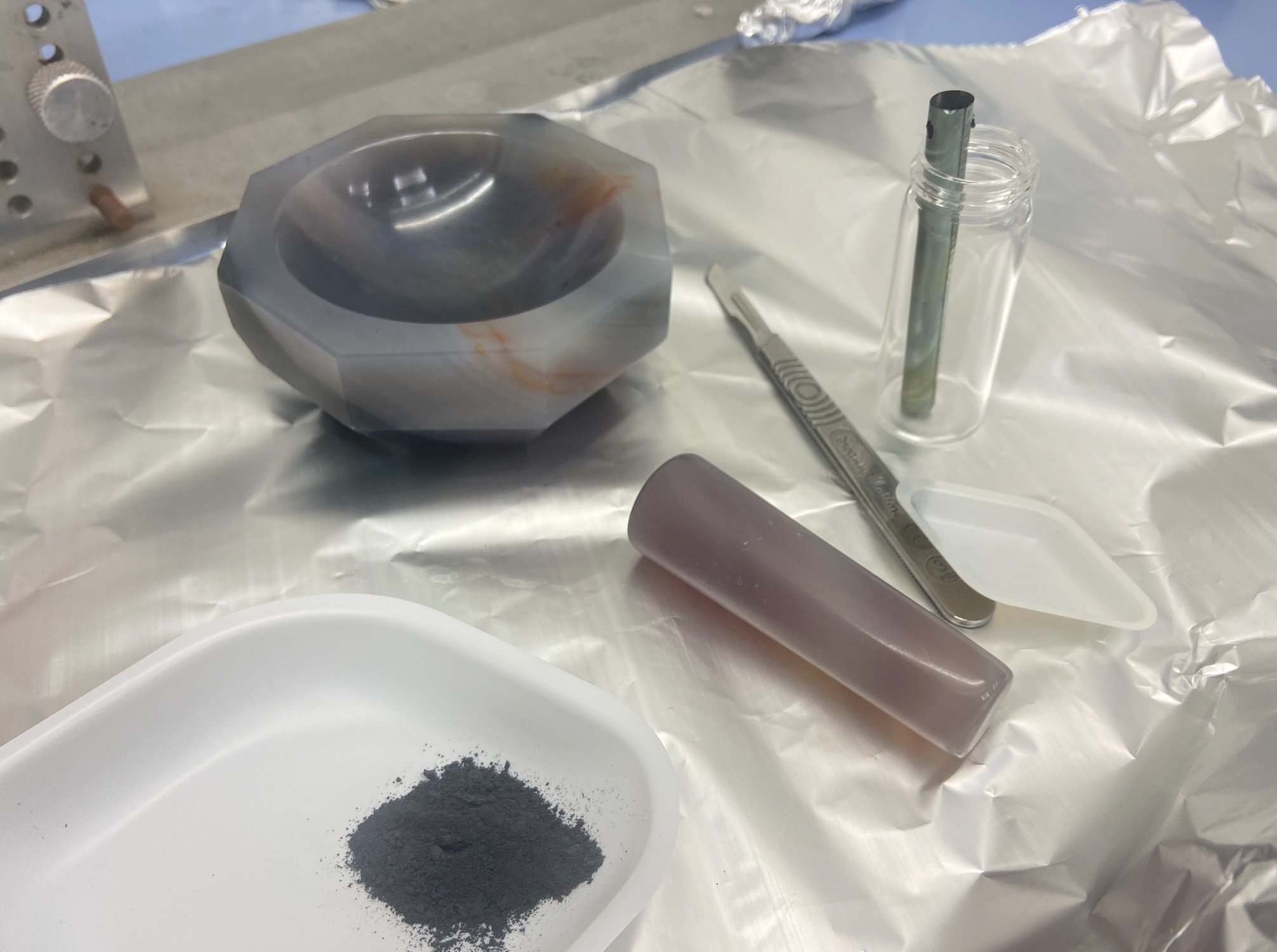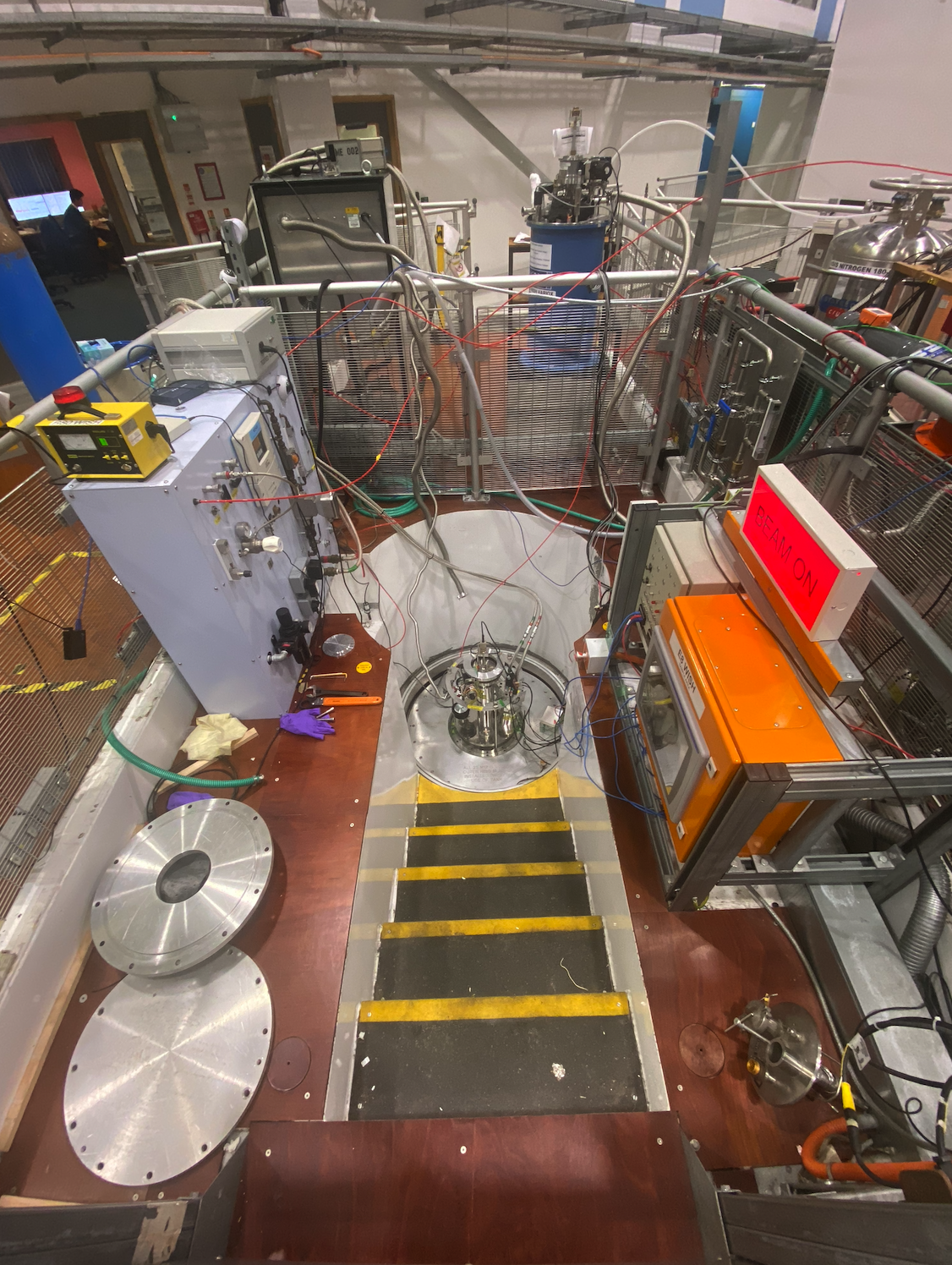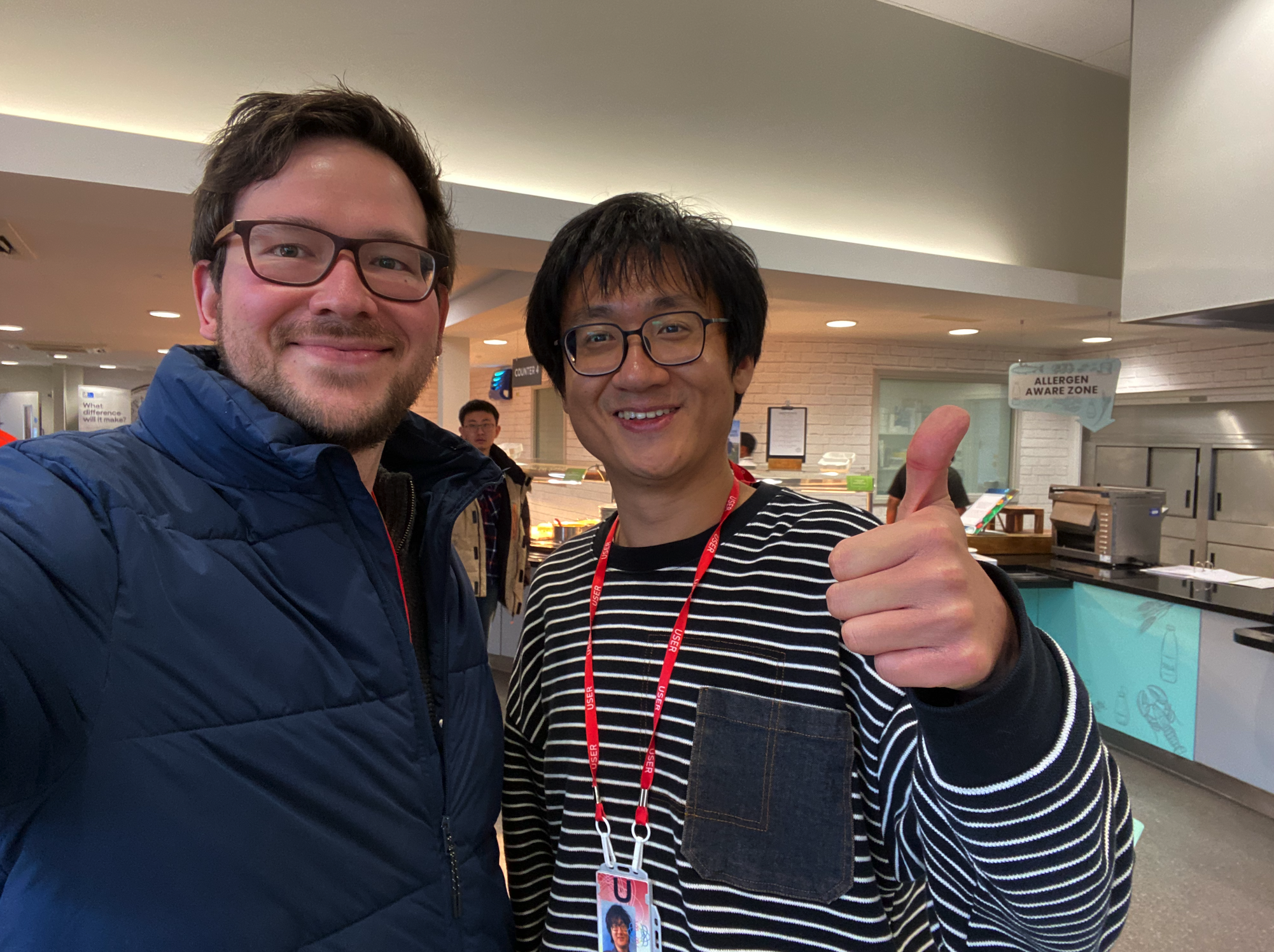A colourful phase diagram
This week Dr Elaheh Sadrollahi (IFMP/PDQM) and I travelled to the ISIS neutron source in Oxfordshire (UK) to characterize the neutron scattering from a thiospinel material, CuCr2S4.
Elaheh has devoted much of her scientific career to exploring the varied magnetic ground states of these types of cubic crystals. The thiospinels (“thio”: containing sulphur) have the chemical formula AB2S4 and form networks of corner- and edge-sharing AS4 tetrahedra (blue) and BS6 octahedra (green).
The flexibility of substituting different transition metals in the A and B positions opens up an abundance of correlated electronic states, defined by the competition of (in-)direct correlations. Thiospinels are known for a tendency towards mixed valency, orbital order, as well as electronic phase separation and colossal magnetoresistance. For instance, it was recently shown that the incommensurate spin spiral order in ZnCr2Se4 (only B magnetic) can only be explained by taking into account up to fourth-nearest-neighbour correlations. On the other hand, in MnSc2S4 (only A magnetic), the degeneracy of such anisotropic interactions creates a spiral spin liquid which, in an applied magnetic field, produces topologically non-trivial (skyrmion) order.
The unusual phenomena arising in spinels have in fact been a busy field of research for many decades. In many cases, the difficulty of synthesizing phase-pure samples has made it very challenging to gain deeper insights. During her PhD work at TU Braunschweig, Elaheh obtained a range of high-purity powders of the (Fe,Cu)Cr2S4 series from Dr Vladimir Tsurkan, an expert in thiospinel synthesis from the University of Augsburg. Using a technique called muon spin-rotation (muSR), she discovered that the magnetism of this series is more complex than it was long thought to be. Instead, Elaheh charted a colourful low-temperature phase diagram of competing orbital and magnetic (re-)ordering instabilities. It seems there must be several almost degenerate mechanisms by which the valence states of Fe, Cu, and Cr choose to accommodate themselves in an energetically slightly more favourable, distorted ground state.
MuSR belongs to a family of probes of magnetism (like Mössbauer spectroscopy and nuclear or electron spin resonance) which can detect even the weakest traces of magnetic (re-)ordering and slow dynamics inside a material. In this context, local means the opposite of momentum-resolved: For example, muSR data may indicate that a particular type of magnetic order must exist - but it does not reveal its periodicity or the arrangement of magnetic moments. Without such "microscopic" knowledge, it is difficult to interpret the meaning of a phase diagram like the one of the (Fe,Cu)Cr2S4 system.





We are hopeful that today's neutron experiment will provide precisely this microscopic knowledge and open a new window into the end member of the series, CuCr2S4. The stars may be aligned in our favour: Both Cu and Cr should carry large magnetic moments, we have an immense polycrystalline sample (close to 4 grams) - and we already know from bulk probes and muSR that the compound must feature two reordering phenomena, at 88 K and 20 K. Last but not least, we are getting to use one of the best magnetic neutron diffraction machines worldwide.
The WISH time-of-flight diffractometer at the second Target Station (TS2) of the ISIS neutron source has several design features that minimize noise and maximise resolution and flux at small momentum transfers, making it particularly powerful for our application. For example, it uses a block of solid methane (at 40 K) to slow down the burst of high-energy neutrons that arrives from the neutron source. Such a spectrum of cold neutrons is favourable, as it lets us resolve effects at small momentum transfers - where the magnetic scattering is most intense.
Moreover, the combination of the time-of-flight concept with a panoramic detector array makes the measurement extremely efficient: By timing the neutrons' flight time from source to detector, we can utilize a whole band of neutron wavelengths from the solid methane spectrum. In effect, we are performing simultaneous diffraction experiments at all scattering angles between 10 and 170 degrees. With a sample as large as this one, it takes hardly ten minutes to obtain a set of complementary histograms with good resolution in different ranges of momentum space.
This is more than a nice-to-have: it may well be that the key to understanding the magnetism of CuCr2S4 lies in structural instabilities and disorder effects. Since neutrons provide a good contrast between copper and chromium (much more than x-rays), we are particularly sensitive to such variations in the nuclear structure. It would be quite exciting if this dataset allowed us to establish direct connections between structural effects, valence distributions and the ensuing magnetic correlations.


